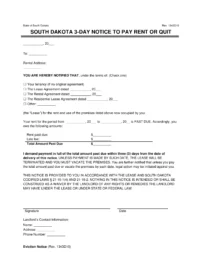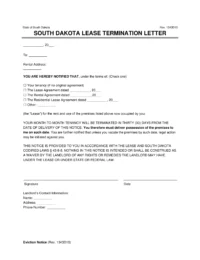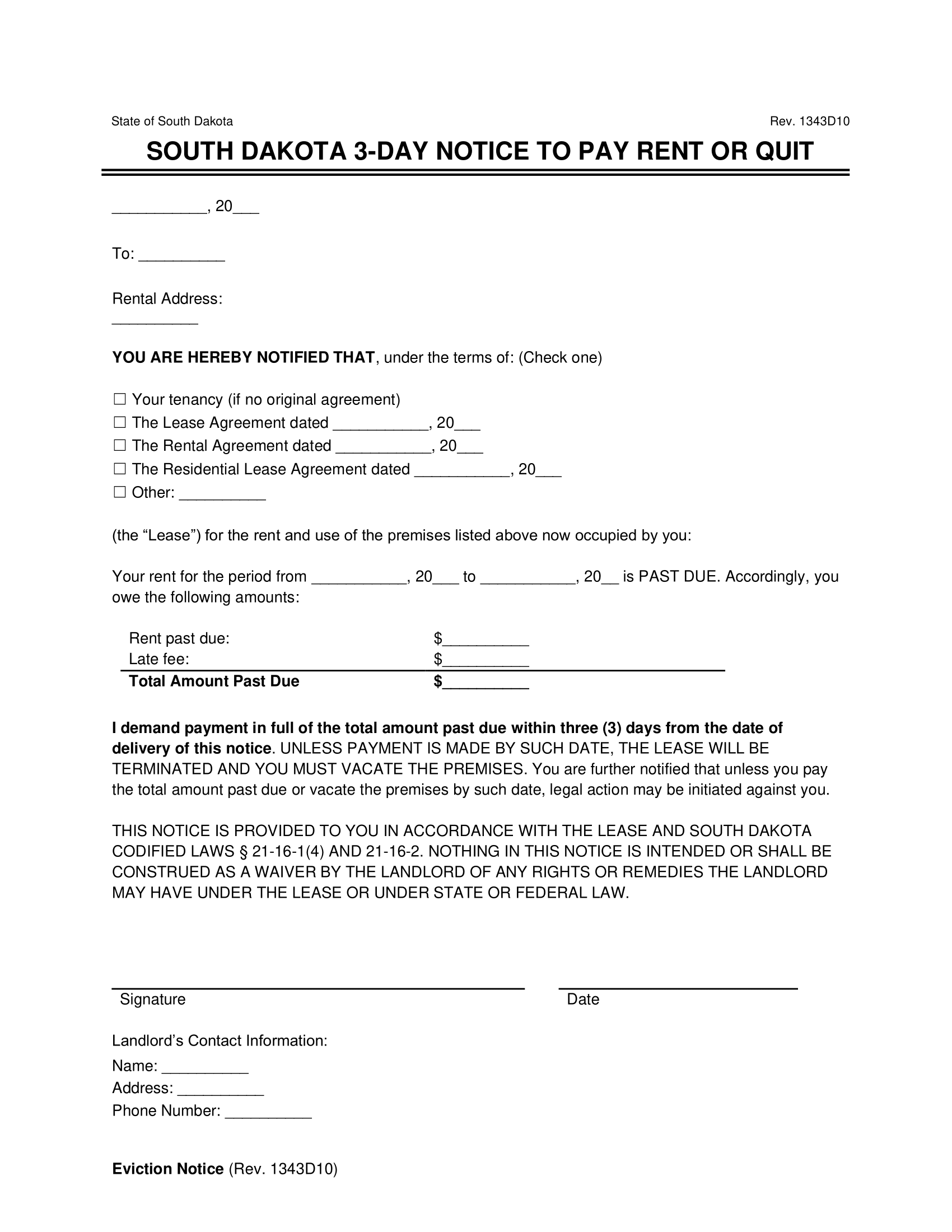A South Dakota eviction notice is the initial formal action a landlord initiates to communicate their intention to evict a tenant if the tenant doesn’t comply with set requirements. This notice explains the nature of the violation and stipulates the allotted time for the tenant to address the matter. If the tenant doesn’t, the landlord can file a lawsuit in the local Circuit Court.
By Type
3-Day Notice to Pay Rent or Quit
Deliver tenants three days' notice to pay rent before eviction can proceed in court.
Notice to Quit for Non-Compliance
Begin evicting a tenant if they’ve broken the terms of your lease.
30-Day Notice Lease Termination
Give tenants 30 days’ notice to move out if they’re on a month-to-month lease.
Eviction Laws & Requirements
- Eviction Lawsuit: SD Codified Laws Chapter 21-16 (Forcible Entry and Detainer)
- Grace Period for Rental Payment: In South Dakota, there is no statute for a grace period or late fees regarding rent.
- Late or Non-Rent Payment Notice: 3 days (SD Codified Laws § 21-16-2).
- Notice of Non-Compliance: Immediate (SD Codified Laws § 43-32-18).
- Lease Termination (Month-to-Month): 30 days (SD Codified Laws § 48-8-8).
How to Evict a Tenant in South Dakota
Step 1 – Send an Eviction Notice
The first step is to provide the tenant with the correct eviction notice. This written document offers the tenant a certain period to vacate the property or rectify the issue, depending on the reason for eviction.
Step 2 – Allow the Tenant to Respond
Give the tenant time to vacate the property if this action is what you ordered in your notice. You may also let them address the violation, which can help you avoid the lengthy eviction process.
Step 3 – File a Lawsuit
File a lawsuit with your local Circuit Court. Submit the appropriate documents and prepare to pay a filing fee, which is around $70.
Step 4 – Serve Summons
Have a sheriff or another authorized party serve the summons to the tenant under one of the approved methods per state law.
Step 5 – Attend a Court Hearing
If the tenant responds (which usually takes four to 30 days), the case will go to court. Proceedings begin, and the court determines whether the tenant can lawfully be removed.
If the tenant prevails, they can stay until their lease ends; if the landlord wins, they can proceed to the next step.
Step 6 – Obtain an Execution for Possession
Once the judgment is delivered, the landlord can get an execution for possession or lockout order. This document provides the date and time that execution of possession can take place and authorizes the Sheriff’s Department to remove the occupant physically if it becomes necessary.
Step 7 – Disposal of Personal Property
The owner must store property left by the tenant worth more than $500 for thirty days (SD Codified Laws § 43-32-26). After that period, the property is considered forfeit.



